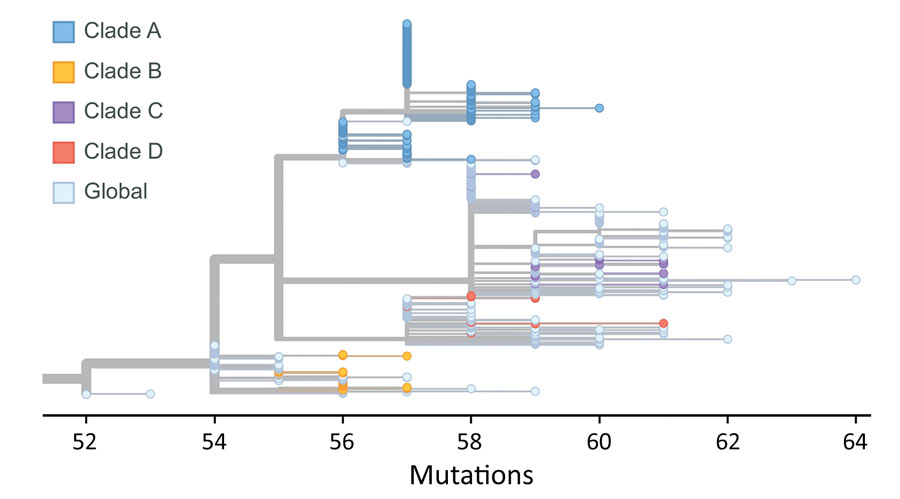Volume 29, Number 2—February 2023
Research
Early Introduction and Community Transmission of SARS-CoV-2 Omicron Variant, New York, New York, USA
Figure 6

Figure 6. Phylogeny of viruses clustered into 4 main clades, including viruses identified in this study from New York, New York, USA, November 25–December 11, 2021, and contextual viruses in various regions from GISAID (https://www.gisaid.org). For each clade, we designated global viruses detected before the time at which we detected the virus within the clade in New York as contextual viruses for phylogeny construction. Colored dots represent viruses from New York by clade; light blue dots represent global contextual viruses.
1These authors contributed equally to this article.
Page created: January 11, 2023
Page updated: January 21, 2023
Page reviewed: January 21, 2023
The conclusions, findings, and opinions expressed by authors contributing to this journal do not necessarily reflect the official position of the U.S. Department of Health and Human Services, the Public Health Service, the Centers for Disease Control and Prevention, or the authors' affiliated institutions. Use of trade names is for identification only and does not imply endorsement by any of the groups named above.